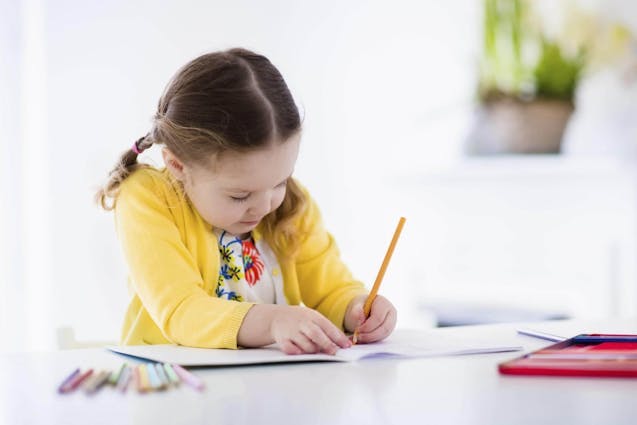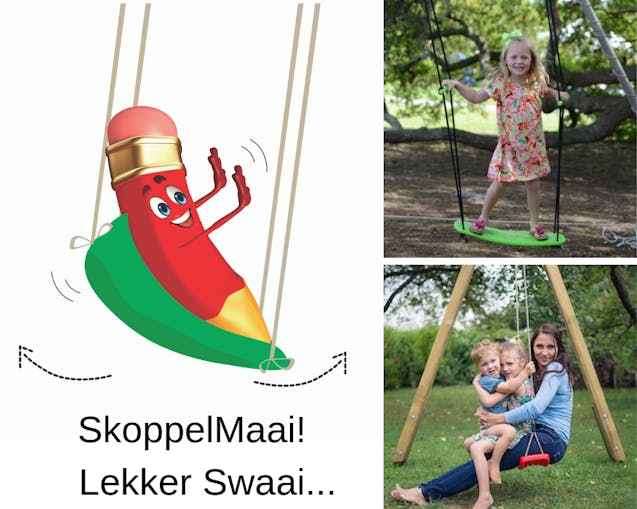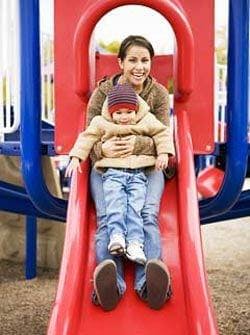
Tel: 087 551 7209 Email: exito.stim@gmail.com
Tel: 087 551 7209 Email: exito.stim@gmail.com
Climbing Kids!
Climbing Kids!
Published 29 July 2020
Published 29 July 2020

Is your little one terribly excited when he/she can play at a park, much to the dismay of your nerves? Or is he/she scared and hides behind you when it comes to the slide or jungle gym? Here’s some advice on getting your little monkey to climb and clamber.
Is your little one terribly excited when he/she can play at a park, much to the dismay of your nerves? Or is he/she scared and hides behind you when it comes to the slide or jungle gym? Here’s some advice on getting your little monkey to climb and clamber.
Why is it important for your child to climb and clamber?
What does he/she learn while playing?
Why is it important for your child to climb and clamber?
What does he/she learn while playing?
It refers to the use of the two parts (right and left) of the body during the performance of an action. It helps with basic tasks such as skipping, running and jumping rope.
It refers to the use of the two parts (right and left) of the body during the performance of an action. It helps with basic tasks such as skipping, running and jumping rope.

2. Strong Shoulder Muscles
2. Strong Shoulder Muscles
Well developed shoulder muscles will help him/her to better control and hold a pencil. When the shoulder muscles are strong, hand function is more coordinated. It will also prevent him/her from getting tired quickly during writing or drawing tasks.
Well developed shoulder muscles will help him/her to better control and hold a pencil. When the shoulder muscles are strong, hand function is more coordinated. It will also prevent him/her from getting tired quickly during writing or drawing tasks.

3. Eye Movements
3. Eye Movements
Stronger eye muscles will ensure that movements flow better and he/she can follow something with ease. The focus of the eyes will also improve.
Stronger eye muscles will ensure that movements flow better and he/she can follow something with ease. The focus of the eyes will also improve.

4. Spatial Orientation
4. Spatial Orientation
Good spatial orientation will foster good body awareness with him/her. This will help with learning directions such as left, right, up and down.
Good spatial orientation will foster good body awareness with him/her. This will help with learning directions such as left, right, up and down.

5. Midline Crossing
5. Midline Crossing
You would think that swinging is a very common action for children and something they MUST enjoy. However, not all children enjoy swinging equally. If he/she is reluctant, you can first put him/her on your lap and swing back and forth gently. Give him/her a chance to build confidence during the action and if he/she does so easily, challenge him/her a bit with the following:
You would think that swinging is a very common action for children and something they MUST enjoy. However, not all children enjoy swinging equally. If he/she is reluctant, you can first put him/her on your lap and swing back and forth gently. Give him/her a chance to build confidence during the action and if he/she does so easily, challenge him/her a bit with the following:
- Ask him/her to focus on an object; this way he/she will keep his/her eyes still while the body moves. Objects are thus studied from different points of view.
- Ask him/her to try swinging from very slow to very fast. Can he/she notice the difference?
- The higher and faster he/she swings the more his/her balance will be challenged. You can even ask an older child to stand and swing, which will be even harder.
- Encourage him/her to kick a ball as he/she swing back and forth, which will challenge his/her planning skills.
- Ask him/her to focus on an object; this way he/she will keep his/her eyes still while the body moves. Objects are thus studied from different points of view.
- Ask him/her to try swinging from very slow to very fast. Can he/she notice the difference?
- The higher and faster he/she swings the more his/her balance will be challenged. You can even ask an older child to stand and swing, which will be even harder.
- Encourage him/her to kick a ball as he/she swing back and forth, which will challenge his/her planning skills.

Slide Past
Slide Past
Sliding is scary for many children! If he/she is anxious, you can first put him/her on your lap and you slide down with him/her. You can also stand on the side and hold his/her hand as he/she slides down or stand at the bottom and catch him/her. Encourage him/her to climb up and slide down on his/her own by the end.
Sliding is scary for many children! If he/she is anxious, you can first put him/her on your lap and you slide down with him/her. You can also stand on the side and hold his/her hand as he/she slides down or stand at the bottom and catch him/her. Encourage him/her to climb up and slide down on his/her own by the end.

See Saw!
See Saw!
If he/she is a little scared to ride the see-saw, you can stand or sit behind him/her and ask dad to sit on the other side. Encourage him/her to kick himself/herself off the ground with both legs simultaneously. To improve the planning and timing, add a rhythm to it: “One, two, three, KICK”. Remember to make him/her aware of what it feels like to be high in the air and low on the ground.
If he/she is a little scared to ride the see-saw, you can stand or sit behind him/her and ask dad to sit on the other side. Encourage him/her to kick himself/herself off the ground with both legs simultaneously. To improve the planning and timing, add a rhythm to it: “One, two, three, KICK”. Remember to make him/her aware of what it feels like to be high in the air and low on the ground.
Through The Shaking Tunnel
Through The Shaking Tunnel
You can stand behind him/her as he/she enters the tunnel and then encourage him/her from the other side. Also, let him/her first roll a ball through the tunnel if he/she is a little scared.
You can stand behind him/her as he/she enters the tunnel and then encourage him/her from the other side. Also, let him/her first roll a ball through the tunnel if he/she is a little scared.
- Midline crossing: One of the most important skills he/she learns when crawling through tunnels is to cross his/her midline.
- Spatial orientation: He/she learns to adjust his/her movements, especially when he/she must change direction while inside the tunnel.
- Shoulder strengthening is also addressed because he/she must crawl through the tunnel on all fours.
- Midline crossing: One of the most important skills he/she learns when crawling through tunnels is to cross his/her midline.
- Spatial orientation: He/she learns to adjust his/her movements, especially when he/she must change direction while inside the tunnel.
- Shoulder strengthening is also addressed because he/she must crawl through the tunnel on all fours.

Exito Stimulation Programme:
Exito Stimulation Programme:
Designed by moms who are
Occupational Therapists
for moms who are not.
Designed by moms who are
Occupational Therapists
for moms who are not.

Marianne Kotze
Marianne Kotze
Marianne Kotzé received her degree in occupational therapy (BSc OT) from the University of Stellenbosch in 2011. She received rewards at the end of her studies for the best academic achievement over the course of four years, the best management of a community service project, and she was part of a group that received the award for best research study in 2011. She did her community service year in Groblersdal in 2012. In 2013 she started a private practice between Bela-Bela, Modimolle and Mokophong until the end of 2015, when she moved to Groblersdal, where she is currently still in private practice. In 2014, as co-owner of Éxito, she started developing a stimulation programme and is still involved in the further development of the project. She completed her specialisation in sensory integration in 2017 and is now a registered ASI therapist at SAISI. She is a dynamic therapist with a passion for making a difference in children’s lives.
Marianne Kotzé received her degree in occupational therapy (BSc OT) from the University of Stellenbosch in 2011. She received rewards at the end of her studies for the best academic achievement over the course of four years, the best management of a community service project, and she was part of a group that received the award for best research study in 2011. She did her community service year in Groblersdal in 2012. In 2013 she started a private practice between Bela-Bela, Modimolle and Mokophong until the end of 2015, when she moved to Groblersdal, where she is currently still in private practice. In 2014, as co-owner of Éxito, she started developing a stimulation programme and is still involved in the further development of the project. She completed her specialisation in sensory integration in 2017 and is now a registered ASI therapist at SAISI. She is a dynamic therapist with a passion for making a difference in children’s lives.

Cecile Niewoudt
Cecile Niewoudt
Cecile Niewoudt received her degree in occupational therapy (BSc OT) in 2011 from the University of Stellenbosch where she was also part of a group that received the award for best research study in 2011. Her community service year was completed in Bethlehem, Free State, in 2012 where she worked at various clinics in the area. In 2013 she started working in private practice, which is mainly focused on child development, and works in Vredendal, Clanwilliam and Citrusdal, and has since expanded to Leipoldtville. Together with Marianne, they started writing and developing the Éxito Stimulation Programme in 2014, and is still actively involved in further developments of the programme. By expanding her knowledge and personal skills, she is determined to make a difference in children’s quality of life.
Cecile Niewoudt received her degree in occupational therapy (BSc OT) in 2011 from the University of Stellenbosch where she was also part of a group that received the award for best research study in 2011. Her community service year was completed in Bethlehem, Free State, in 2012 where she worked at various clinics in the area. In 2013 she started working in private practice, which is mainly focused on child development, and works in Vredendal, Clanwilliam and Citrusdal, and has since expanded to Leipoldtville. Together with Marianne, they started writing and developing the Éxito Stimulation Programme in 2014, and is still actively involved in further developments of the programme. By expanding her knowledge and personal skills, she is determined to make a difference in children’s quality of life.
Copyright 2019 - Exito Stimulation Programme - Disclaimer - Privacy Policy
Copyright 2019 - Exito Stimulation Programme - Disclaimer - Privacy Policy
1. Bilateral Integration
1. Bilateral Integration
Refers to the ability to cross his/her midline during reading and writing tasks.
Refers to the ability to cross his/her midline during reading and writing tasks.
6. Direction
6. Direction
This contributes to the development of spatial orientation.
This contributes to the development of spatial orientation.
7. Planning Skills
7. Planning Skills
It is a higher cognitive skill to plan a task ahead and also solve the problems that go along with it.
It is a higher cognitive skill to plan a task ahead and also solve the problems that go along with it.
8. Balance
8. Balance
It is an important part of your child’s everyday movements and helps keep him/her upright during activities such as skipping or running.
It is an important part of your child’s everyday movements and helps keep him/her upright during activities such as skipping or running.
Different activities have different benefits:
Different activities have different benefits:
8. I am Riding The Swing
8. I am Riding The Swing
- Bilateral integration: He/she is going to use his/her legs to start the swing, with the aim of his/her legs and arms working together rhythmically to start and sustain the action.
- Balance: He/she must keep his/her balance to stay on the swing and not fall off.
- Spatial orientation: He/she will constantly change direction during the swinging action.
- Eye movements: He/she will follow different objects with his/her eyes during the swinging action. He/she will also find out if the object is far or near.
- Bilateral integration: He/she is going to use his/her legs to start the swing, with the aim of his/her legs and arms working together rhythmically to start and sustain the action.
- Balance: He/she must keep his/her balance to stay on the swing and not fall off.
- Spatial orientation: He/she will constantly change direction during the swinging action.
- Eye movements: He/she will follow different objects with his/her eyes during the swinging action. He/she will also find out if the object is far or near.
- Strong shoulder muscles will be stimulated when he/she climbs up the steps or ladder.
- Because he/she climbs down the stairs with alternating hands and feet, his/her midline is crossed.
- Direction: Because he/she is climbing up the stairs and sliding down, his/her body is exposed to a change of direction.
- Planning skills: As he/she slides down, he/she needs to think about the landing at the bottom, which requires planning ahead.
- Strong shoulder muscles will be stimulated when he/she climbs up the steps or ladder.
- Because he/she climbs down the stairs with alternating hands and feet, his/her midline is crossed.
- Direction: Because he/she is climbing up the stairs and sliding down, his/her body is exposed to a change of direction.
- Planning skills: As he/she slides down, he/she needs to think about the landing at the bottom, which requires planning ahead.
Benefits of sliding:
Benefits of sliding:
- Riding a see-saw will challenge his/her balance.
- Eye movements: Because he/she is going to focus his/her eyes on the friend opposite him/her as he/she bounces up and down; thus, the background will move.
- Planning skills: Because he/she must plan how much power he/she needs to use to bounce high in the air.
- Direction: He/she will physically experience the feeling of moving “up” and “down”.
- Riding a see-saw will challenge his/her balance.
- Eye movements: Because he/she is going to focus his/her eyes on the friend opposite him/her as he/she bounces up and down; thus, the background will move.
- Planning skills: Because he/she must plan how much power he/she needs to use to bounce high in the air.
- Direction: He/she will physically experience the feeling of moving “up” and “down”.